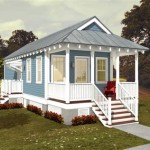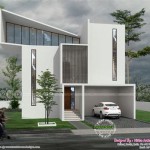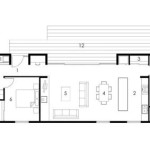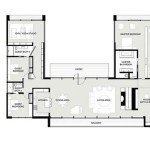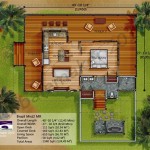Small house plans refer to architectural designs for residential properties that prioritize space utilization and cost-effectiveness. These plans typically encompass homes with floor areas ranging from 500 to 1,200 square feet, offering a compact and efficient living solution. Small house plans are gaining popularity among individuals seeking affordability, sustainability, and a minimalist lifestyle.
The primary function of small house plans is to maximize functionality within a limited footprint. They often incorporate open floor plans, multi-purpose rooms, and clever storage solutions to create a comfortable and practical living environment. For example, a small house plan may feature a combined living and dining area, a kitchen with a breakfast bar, and built-in storage under stairs.
In the following sections, we will delve into the advantages and challenges of small house plans, explore various design options, and provide guidance on selecting the right plan for your needs.
When considering small house plans, it’s important to keep in mind the following key points:
- Space utilization
- Cost-effectiveness
- Open floor plans
- Multi-purpose rooms
- Clever storage solutions
- Functionality
- Affordability
- Sustainability
- Minimalism
These factors will help you make informed decisions and choose a small house plan that meets your specific needs and preferences.
Space utilization
Space utilization is paramount in small house plans, as every square foot needs to be carefully considered and optimized for maximum functionality and comfort. Here are some key strategies for maximizing space utilization in small house plans:
Open floor plans: By eliminating unnecessary walls and partitions, open floor plans create a more spacious and airy feeling, even in compact homes. This approach allows for a smooth flow of movement and natural light, making the space feel larger and more inviting.
Multi-purpose rooms: Multi-purpose rooms serve multiple functions, eliminating the need for separate dedicated spaces. For example, a living room can double as a guest room by incorporating a pull-out sofa bed. Similarly, a dining area can be integrated into the kitchen, creating a more cohesive and space-efficient layout.
Built-in storage: Built-in storage solutions, such as shelves, drawers, and cabinets, are essential for keeping clutter at bay in small homes. By utilizing vertical space and incorporating storage into walls and furniture, you can maximize storage capacity without sacrificing valuable floor space.
Vertical orientation: Taking advantage of vertical space is crucial in small house plans. Lofts and mezzanines can be incorporated to create additional sleeping or storage areas, while tall bookshelves and cabinets provide ample vertical storage without taking up too much floor space.
By implementing these strategies, small house plans can achieve optimal space utilization, ensuring that every square foot is used efficiently and effectively, creating a comfortable and functional living environment.
Cost-effectiveness
Cost-effectiveness is a primary consideration in small house plans. By adopting various strategies, it’s possible to construct a small house that meets your needs without breaking the bank.
Smaller footprint: The most significant cost-saving factor in small house plans is their reduced footprint. A smaller home requires less land, which can result in substantial savings on land acquisition costs. Additionally, a smaller footprint means less building materials are needed, leading to lower construction costs.
Simple design: Small house plans often favor simplicity over elaborate designs. By avoiding complex architectural features and unnecessary ornamentation, builders can save on materials and labor costs. Simple, rectangular structures are generally more cost-effective to build than homes with intricate shapes and multiple angles.
Energy efficiency: Small houses are inherently more energy-efficient than larger homes. With a reduced surface area, there is less heat loss in the winter and less heat gain in the summer. This can lead to significant savings on heating and cooling costs over the life of the home.
Sustainable materials: Utilizing sustainable building materials, such as recycled or locally sourced materials, can further reduce construction costs. Sustainable materials often have a lower environmental impact and can be more cost-effective than traditional materials.
By carefully considering these factors, small house plans can achieve cost-effectiveness without compromising on quality or comfort, making them an attractive option for budget-conscious homeowners.
Open floor plans
Open floor plans have become increasingly popular in small house plans due to their ability to create a more spacious and airy feeling, even in compact homes. By eliminating unnecessary walls and partitions, open floor plans allow for a smooth flow of movement and natural light, making the space feel larger and more inviting.
One of the key advantages of open floor plans in small houses is their ability to maximize space utilization. By removing walls, the available space is used more efficiently, creating a more cohesive and functional living environment. This approach is particularly beneficial in areas such as the living room and kitchen, where multiple functions can be accommodated within a single open space.
Open floor plans also promote better communication and interaction among family members and guests. With fewer physical barriers, there is a greater sense of connection and togetherness. This is especially important in small homes, where every square foot needs to be used wisely to foster a sense of community and belonging.
Furthermore, open floor plans can enhance the overall aesthetic appeal of a small house. By allowing for uninterrupted sightlines and a more spacious feel, open floor plans create a more modern and contemporary look, which is often sought after by homeowners today.
It’s important to note that open floor plans may not be suitable for everyone. Some individuals may prefer more traditional layouts with separate rooms for privacy and noise reduction. However, for those who prioritize space, functionality, and a modern aesthetic, open floor plans offer a compelling solution in small house plans.
Multi-purpose rooms
Multi-purpose rooms are a key feature of small house plans, as they allow homeowners to maximize space utilization and create flexible living environments. These rooms can serve multiple functions, eliminating the need for separate dedicated spaces, which is particularly valuable in compact homes.
One common example of a multi-purpose room is a living room that doubles as a guest room. By incorporating a pull-out sofa bed or a Murphy bed, the living room can easily transform into a comfortable sleeping space for guests or family members. This approach not only saves space but also provides added versatility to the home.
Another popular multi-purpose room is a dining area that is integrated into the kitchen. By creating an open floor plan between the kitchen and dining area, homeowners can create a more cohesive and spacious living space. This layout is ideal for small homes, as it eliminates the need for a separate dining room, freeing up valuable square footage for other purposes.
Multi-purpose rooms can also be used to accommodate hobbies and special interests. For example, a spare room can be transformed into a home office, a craft room, or a playroom for children. By incorporating built-in storage and furniture that can be easily reconfigured, multi-purpose rooms can adapt to changing needs and interests over time.
Overall, multi-purpose rooms offer a practical and versatile solution for small house plans, allowing homeowners to maximize space utilization and create flexible living environments that meet their unique needs and lifestyles.
Clever storage solutions
Clever storage solutions are essential for maximizing space utilization and maintaining a clutter-free environment in small house plans. Here are some innovative and practical storage ideas:
- Vertical storage: Utilize vertical space by installing shelves, cabinets, and drawers that reach up to the ceiling. This is especially useful in small kitchens and bathrooms, where wall-mounted storage can free up valuable floor space.
- Multi-purpose furniture: Choose furniture that serves multiple functions, such as ottomans with built-in storage or coffee tables with drawers. This type of furniture can help declutter your home and keep frequently used items within easy reach.
- Hidden storage: Incorporate hidden storage spaces into your home’s design, such as under-bed drawers, pull-out pantries, and built-in shelves behind mirrors. These hidden storage areas can help keep clutter out of sight and maintain a clean and organized living space.
- Adjustable shelving: Install adjustable shelving systems that can be customized to fit your storage needs. This allows you to maximize vertical space and easily adjust the shelves to accommodate items of different sizes and shapes.
By implementing these clever storage solutions, you can create a more functional and organized small home, ensuring that every square foot is used efficiently and effectively.
Functionality
Functionality is paramount in small house plans, as every square foot needs to be carefully considered to maximize comfort and efficiency. Here are some key aspects to consider:
Space planning
Space planning is crucial in small house plans to ensure that the available space is used wisely and efficiently. This involves carefully considering the placement of walls, furniture, and appliances to create a functional and comfortable living environment. By optimizing space planning, homeowners can create a small house that feels spacious and airy, despite its limited footprint.
Flow of movement
The flow of movement within a small house is also important for functionality. By creating a smooth and logical flow of movement, homeowners can make their homes feel more spacious and reduce the feeling of clutter. This can be achieved by avoiding unnecessary hallways and dead-end spaces, and by ensuring that there is a clear path between different areas of the home.
Multi-functional spaces
Multi-functional spaces are a key feature of small house plans, as they allow homeowners to maximize space utilization and create flexible living environments. These spaces can serve multiple functions, eliminating the need for separate dedicated rooms, which is particularly valuable in compact homes. For example, a living room can double as a guest room by incorporating a pull-out sofa bed or a Murphy bed, while a dining area can be integrated into the kitchen to create a more cohesive and spacious living space.
Storage solutions
Clever storage solutions are essential for maintaining a clutter-free and organized environment in small house plans. By incorporating innovative storage ideas, such as vertical storage, multi-purpose furniture, hidden storage, and adjustable shelving, homeowners can maximize space utilization and keep frequently used items within easy reach. This helps to create a more functional and comfortable living space, even in a compact home.
Affordability
Affordability is a primary concern for many homeowners, and small house plans offer several advantages in this regard:
- Lower construction costs: The smaller size of small house plans means that they require less building materials and labor to construct, resulting in lower overall construction costs.
- Reduced land costs: Small house plans typically have a smaller footprint, which can lead to significant savings on land acquisition costs, especially in urban areas where land is at a premium.
- Energy efficiency: Small houses have a smaller surface area, which reduces heat loss in the winter and heat gain in the summer. This can lead to lower energy bills and long-term savings on utility costs.
- Lower maintenance costs: Smaller homes generally require less maintenance and repairs compared to larger homes, as there is less space to maintain and fewer systems to upkeep.
In addition to these direct cost savings, small house plans can also contribute to affordability by promoting a more sustainable lifestyle. Smaller homes require less energy and resources to operate, which can reduce the overall cost of living and contribute to a more environmentally conscious lifestyle.
Sustainability
Sustainability is a key consideration in modern architecture, and small house plans offer several advantages in this regard:
Reduced energy consumption
Smaller homes have a smaller surface area, which reduces heat loss in the winter and heat gain in the summer. This means that small houses require less energy to heat and cool, leading to lower energy bills and a reduced carbon footprint. Additionally, small houses can be more easily designed to incorporate passive solar design principles, which further reduce energy consumption.
Efficient use of resources
Small house plans promote the efficient use of resources throughout the construction and operation of the home. They require less building materials to construct, reducing the environmental impact associated with material extraction and transportation. Additionally, small houses generate less waste during construction and demolition, and they require fewer resources to maintain and operate over their lifetime.
Environmentally friendly materials
Small house plans often incorporate sustainable building materials and finishes, such as recycled materials, low-VOC paints, and energy-efficient appliances. These materials help to reduce the environmental impact of the home, both during construction and throughout its lifespan. By choosing sustainable materials, homeowners can create a healthier and more environmentally responsible living space.
Resilience to climate change
Small house plans can be designed to be more resilient to the impacts of climate change, such as extreme weather events and sea level rise. By incorporating sustainable design features, such as storm-resistant windows and elevated foundations, small houses can better withstand the challenges of a changing climate. Additionally, small houses are often located in more urban areas, which reduces the risk of wildfires and other natural disasters.
Overall, small house plans offer a more sustainable approach to homeownership, reducing energy consumption, promoting efficient use of resources, and incorporating environmentally friendly materials. By choosing a small house plan, homeowners can create a more sustainable and resilient living space that has a reduced impact on the environment.
Minimalism
Minimalism, a lifestyle characterized by simplicity, intentionality, and a focus on the essential, is a natural complement to small house plans. By embracing minimalism in the design and furnishing of their homes, homeowners can create a more spacious, serene, and sustainable living environment.
- Decluttering and Organization: Minimalism encourages decluttering and maintaining a well-organized home. By paring down possessions and keeping only what is truly needed and valuable, homeowners can reduce clutter and create a more peaceful and relaxing living space.
- Multi-functional Spaces: Minimalist design often incorporates multi-functional spaces, where each room serves multiple purposes. This approach helps to maximize space utilization and create a more versatile living environment. For example, a living room can double as a guest room by incorporating a pull-out sofa bed, or a kitchen can include a dining area.
- Natural Light and Ventilation: Minimalist homes often feature large windows and open floor plans to maximize natural light and ventilation. This not only creates a brighter and more inviting living space but also reduces the need for artificial lighting and ventilation, leading to energy savings.
- Sustainable Materials and Finishes: Minimalism emphasizes the use of sustainable materials and finishes, such as natural wood, stone, and recycled materials. These materials are not only durable and aesthetically pleasing but also contribute to a healthier and more environmentally responsible living space.
By embracing minimalism in small house plans, homeowners can create a more intentional and sustainable living environment that promotes well-being and reduces environmental impact. Minimalism helps to eliminate clutter, maximize space utilization, incorporate natural elements, and prioritize sustainable choices, resulting in a home that is both functional and beautiful.










Related Posts




